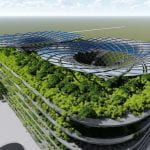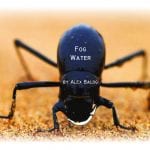Class Notes
I. Review of student projects
II. Fractals & Recursion
A. Yale website with natural and mathematical examples (see Mandelbrot artcle in the course disk)
http://users.math.yale.edu/public_html/People/frame/Fractals/
B. Michael Frame on Benoit Mandelbrot and Fractals
https://www.youtube.com/watch?v=bz8NJ7ZVXwQ
C. Fractals in Architecture:
Ron Eglash inspired architect Xavier Vilalta (TedTalks)
Iranian vault patterns
D. Fractals and Self-similarity in Grasshopper
- Iteration in Grasshopper (Without scripting) |
https://heumanndesigntech.wordpress.com/2010/08/13/iteration-in-grasshopper-without-scripting/
Andrew heumann explains the concept of recursion with Grasshopper examples. - Fracture Hopper demonstrates common fractal behaviors.
- Anemone creates fractals and recursion
- Nudibranch creates fields, allows particle tracing for rain, etc.
III. Browse Zygote Quarterly: a great source to understand biomimicry process and see beautiful drawings
https://issuu.com/eggermont/docs
Latest issue 15:2
A. Digital drawings of plants
B. Steven Vogel on invention success vs failure:
– Is the device likely to work at a scale that is useful for humans?
– Can a version of the device be constructed by means that are practical for human technology?
– Might the device possibly offer some advantage in an application over what we currently use, or might it offer some entirely new and attractive capability? (compare existing market)
– Can nature’s version be improved upon either in fuctional effectiveness or in ease of manufacture by some alteration in the design such as using materials and components specific to human technology?”
C. Steven Vogel on why solar panels shouldn’t look like trees
D. Back issues are really great too:
IV. Grasshopper Examples:
Flying –
– Series to create freeze frame motion > slider bar
– Graph mapper for flight path
Kangaroo
– Points > Particles with mass and velocity
– Lines > Springs from Lines
– Meshes > Springs from Mesh, Wind for Mesh











